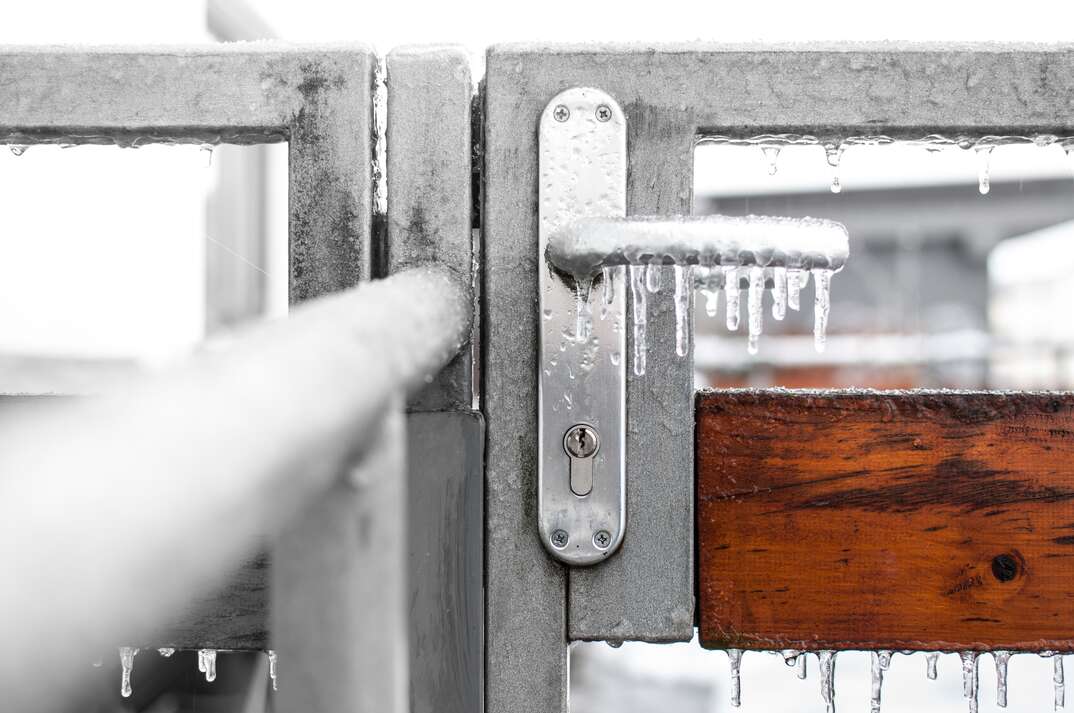- AppliancesElectriciansHVACLandscapingLocksmithPest ControlPlumbingRenovationRoofingT V RepairAll Home Improvement
- Car AccidentClass ActionCorporate LawCriminal DefenseDivorce LawEmployment LawFamily LawFinancial LawLegal AidMedical Injury LawyersMedical MalpracticeReal Estate LawWater Fire RestorationAll Legal
- InvestmentRetirementAll Finance
- Animal InsuranceAutoGeneral InsuranceHealth PolicyHome RentersAll Insurance
- DentalHealth SpecialistsAll Medical
- Animal CareVeterinaryAll Pets
- Auto GlassTowingAll Automotive
How to Unfreeze Your Locks

A frozen front door or car lock can be stressful — especially if you need to open the door urgently. If you live in a cold climate, it's worth learning how to unfreeze a lock so that you know what to do in an emergency.
Here’s how to unfreeze a lock on a car door or front door using simple DIY methods — no locksmith required.
Many people's first instinct when they encounter a frozen door lock is to pour hot water over it. However, boiling water could damage your lock and lead to more problems later on. Depending on the temperature outside, it can also quickly refreeze, leaving you right back where you started.
Instead, try using a gentler method to unfreeze the lock. Start by clearing away any accumulated ice around the lock by chipping it away gently with a key or another metal object, taking care not to damage the lock or scratch the surrounding door.
You can use an external heat source like a hairdryer to melt the ice inside the lock. Alternatively, try spraying de-icing spray or a lock lubricant like WD-40 inside the lock to defrost it. Then, insert the key to see if you can open the lock.
If you don't have a nearby outlet to plug in a heat source and don't have any de-icer on hand, heating the key is a potential alternative. You can heat your key by placing it over a lit match or blowtorch or immersing it in hot water. Be careful when heating your key over a flame, and wear protective gloves to prevent burns. Then, try inserting the heated key into the lock to melt the ice. Don't force it, or you could end up with a broken key. You may need to repeat the process several times to get your door unlocked.
What Do I Do If My Door Is Frozen Shut?
Never attempt to yank open a house or car door that's frozen shut. A short, sharp tug may break the ice holding the door shut, but it could also damage the door seal.
Instead, use de-icer, a hairdryer or a stream of warm (not hot) water to melt the ice around the door's perimeter. If possible, gain entry to your car or house through another door and turn on the heater to try and melt the ice.
Apply firm, steady pressure to the frozen door once you've defrosted some of the ice without pushing or pulling it sharply to see if you can open it. If not, continue defrosting layers of ice until you can pull the door open. Remember to dry the door thoroughly if you used warm water to stop it from refreezing later.
Just like a frozen house door, it's never a good idea to pour boiling water over a car lock. Instead, try parking your car somewhere sunny to try and melt some of the ice. You could also try gaining entry through another door and turning the engine and heater on. This method is generally more suitable for defrosting frozen car locks because chipping ice away could damage the paintwork.
One of the simplest ways to open a frozen car lock is to coat your key with de-icer. If you don't have de-icer with you, hand sanitizer is an effective alternative because its high alcohol content will melt the ice inside the lock. Cover your key in sanitizer gel, insert it carefully into the lock and leave it in place for a couple of minutes before trying to turn it. Remove the key, coat it in another layer of hand sanitizer and repeat the process if the lock feels stiff. Be careful with this method: Trying to force the key to turn could cause the end to snap off inside the lock.
Elocal Editorial Content is for educational and entertainment purposes only. Editorial Content should not be used as a substitute for advice from a licensed professional in your state reviewing your issue. Systems, equipment, issues and circumstances vary. Follow the manufacturer's safety precautions. The opinions, beliefs and viewpoints expressed by the eLocal Editorial Team and other third-party content providers do not necessarily reflect the opinions, beliefs and viewpoints of eLocal or its affiliate companies. Use of the Blog is subject to the
Website Terms and Conditions.The eLocal Editorial Team operates independently of eLocal USA's marketing and sales decisions.



